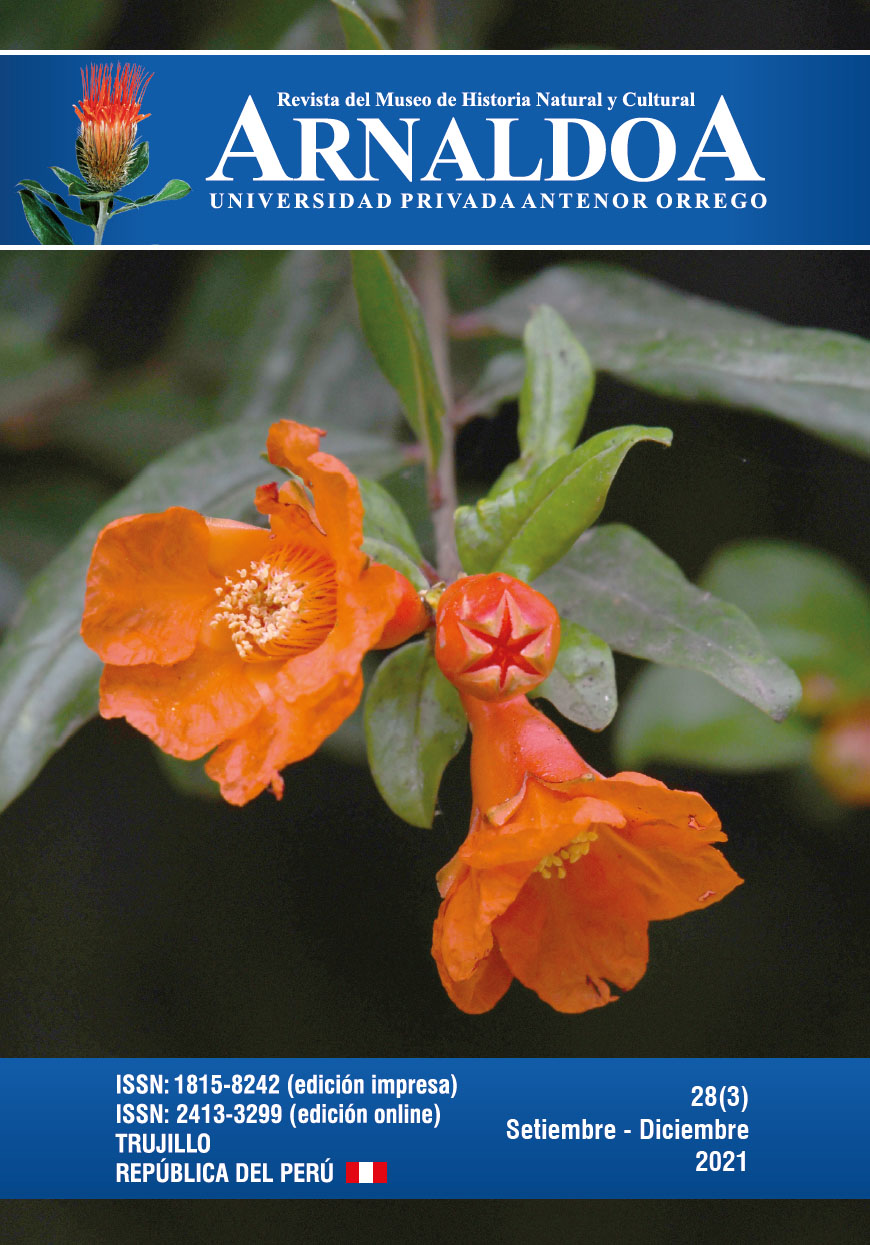Flora and fauna of the Huarimayoforest (Canta, Lima-Peru): A littleremnant area with high biodiversity
DOI:
https://doi.org/10.22497/arnaldoa.311.31103Keywords:
Andes, animals, hotspots, montane forest, plantsAbstract
The relict forest of Huarimayo is located on the western slope of the central Andes of Peru, between
2700–3200 m. Together with Zárate and Linday, they are the only dry cloud forests reported for
the department of Lima. These discontinuously distributed forests are considered among the
most threatened ecosystems due to the burning of the soils for adaptation to agricultural land
and livestock activities. The objective of this study is to provide a biodiversity assessment for the
Huarimayo relict forest and to use the data to analyze geographical relationships of restricted
species to the dry cloud forest. Evaluations were carried out between 2015 and 2019. The fauna
is represented by 54 species, including 49 species of birds, three mammals and two reptiles, while
the flora is composed of 238 species of vascular plants, including seven infraspecific taxa (four
subspecies and three varieties) and 31 species of non-vascular plants (including one subspecies and
one variety). Two liverworts, Cryptomitrium tenerum and Fossombronia lamellata, are newly reported
to Peru. Endemism is composed of 55 (23%) species consisting of 46 plants, six birds, two mammals
and one reptile. We concluded that the diversity of the Huarimayo relict forest is representative of
the western slope, whose most important floristic contributions come from the northwestern zone,
which also functions as a strategic site for altitudinal migratory birds.
Downloads
Downloads
Published
Issue
Section
License
Copyright (c) 2025 Paúl Gonzáles, Elena Castañeda, Elluz Huamán, Warner Aparco, Bryan Espinoza Prieto, José Salvador, Yangjosé Juárez, Juan C. Cusi, Diego Olivera, Yessica Vilca, Jasmin Opisso, Asunción Cano, Niels Valencia

This work is licensed under a Creative Commons Attribution 4.0 International License.
By submitting a paper to the journal, it is understood that the authors agree to transfer the publication rights to the journal once it is accepted.
It is permitted to share and adapt the contents of this journal in any medium or format always if the original source is properly cited and there are not commercial purposes.







